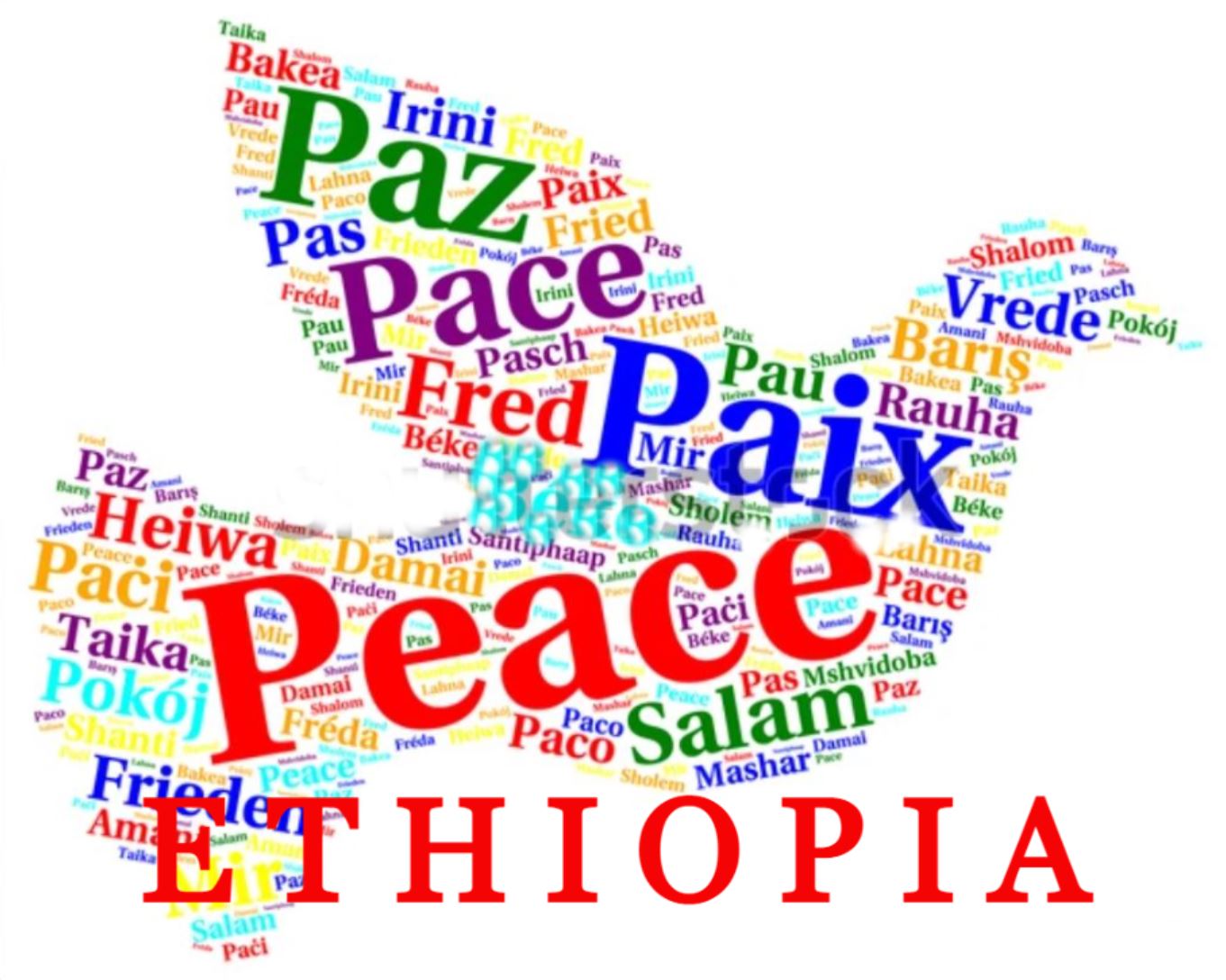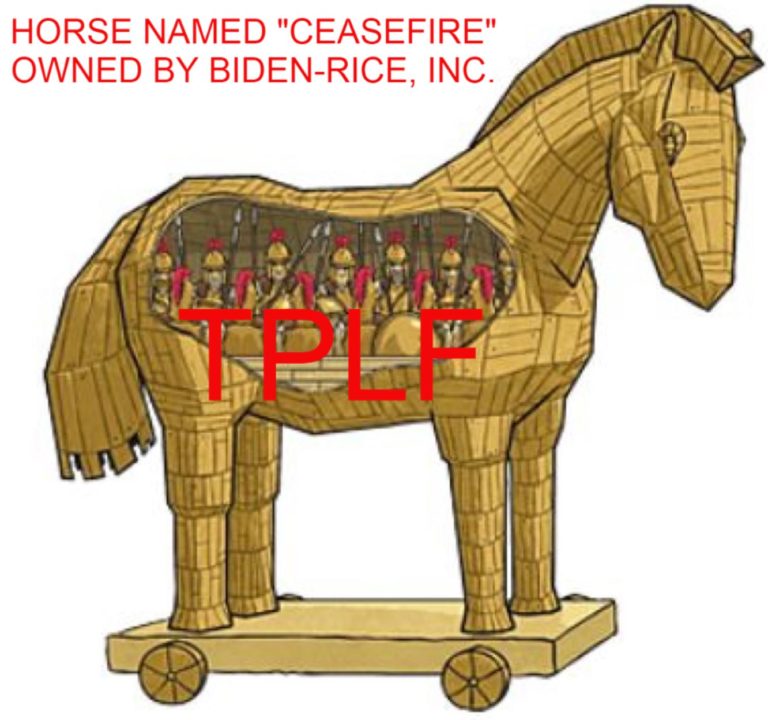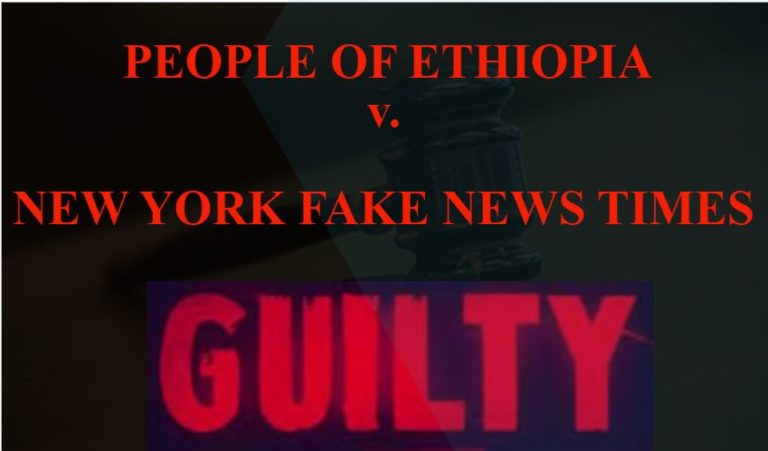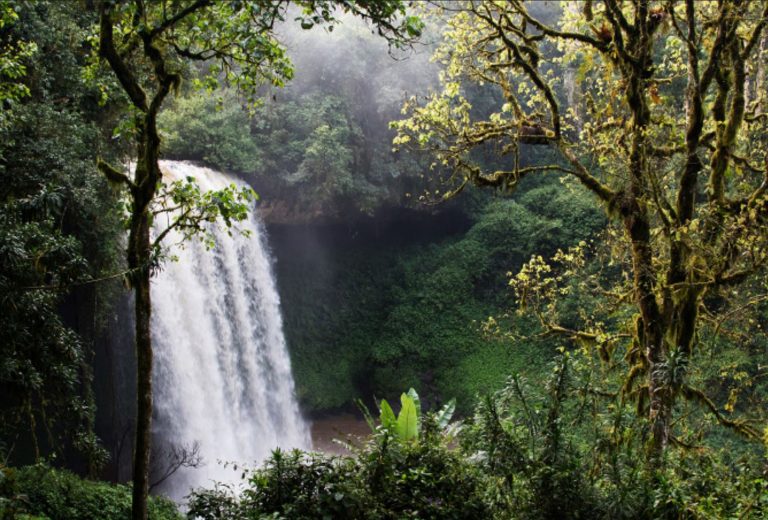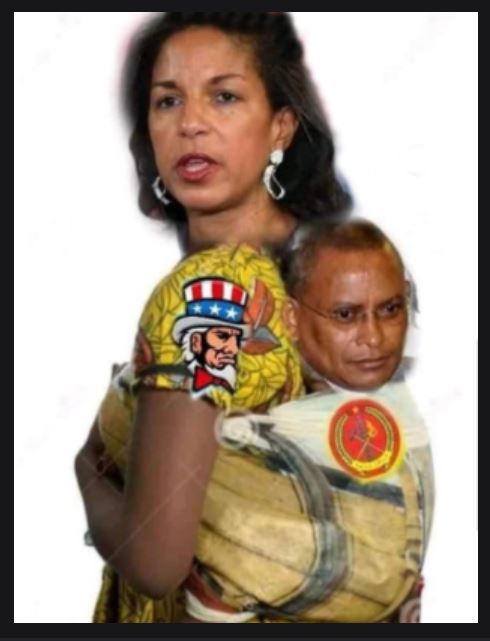MY DREAM OF ETHIOPIA AT PEACE AND HER ENEMIES IN PIECES (PART I)

Today, the struggle is between those who want to see Ethiopia at peace and Ethiopia in pieces.
Author’s Note: Over the past week, the suspension of prosecution and release of certain high-profile individuals held over for trial has been a source of confusion, disappointment, incredulity, exasperation, acrimony, anger and outrage across communities in Ethiopia and in the diaspora.
Those objecting to the suspension and release offer various arguments:
The timing is wrong. Why now? Why on Ethiopian Genna (Christmas Day)?
The legal procedure for the release of the individuals is unclear. Neither is their legal status given the fact “amnesty” and “pardon” have been used interchangeably in describing their release.
The individuals should have gone through the trial process and granted reprieve after conviction.
Ther is a lack of transparency in the decision to release the individuals.
The government should have prepared the public for a decision it should have known will be very controversial.
The release of the individuals makes a travesty of their victims’ pain and suffering.
The release sends the wrong message of impunity for criminal wrongdoing.
There must be legal accountability for those who commit crimes that have resulted in deaths and destruction of property.
The release undermines confidence in the judicial system and criminal adjudication process.
The release is based on improper political calculation which subordinates justice to expediency.
The decision disregards intense public opinion for prosecution and undermines the rule of law.
The decision was made to appease the West and reduce pressure.
And so on.
Given the nature of the criminal charges leveled against the individuals, I can certainly understand the range of emotions and views exressed from different segments of the Ethiopian community.
But I look at the government’s decision to suspend prosecution not from the layman’s point of view but from the perspective of a criminal defense lawyer with three decades of experience in American state and federal courts.
Resolution of criminal cases in the pretrial phase or even after trial has begun using a variety of procedural techniques is not unusual.
Indeed, there is a manual of U.S. “Principles of Federal Prosecution” which may appear to the lay person to be a complete travesty of justice.
The fact of the matter is that 97 percent of all criminal cases (certainly in California) in the U.S. are resolved in plea agreements which may include suspension of prosecution or even non-prosecution where the government believes doing so serves a higher purpose.
I also look at the suspension of prosecution from a broader political perspective.
In 2018, the Ethiopian government dropped charges and released more than 6 thousand individuals from pretrial detention and others convicted and serving time on serious allegations. Indeed, two individuals recently released by suspended prosecution were also released from prison in 2018.
One prominent individual sentenced to death was also released in 2018.
The government sought to promote peace and harmony in society by releasing thousands of suspects and prisoners.
I can certainly understand why people unfamiliar with the criminal law and the adjudicatory process are confused and disappointed.
While I appreciate and respect the views of those who wish to criticize the government for its acts and omissions in suspending prosecution and releasing suspects, I have decided to use the opportunity to share my dream of Ethiopia at peace at this critical moment in Ethiopia’s history.
As a “diaspora Ethiopian” who has fought relentlessly for democracy, human rights and peace in Ethiopia for over a decade and half with nothing more than my pen/laptop keyboard, I find it necessary to share my dreams for an Ethiopia at peace with the people of Ethiopia.
I am in Ethiopia now.
Over the past couple of weeks, I have talked casually to people in the street, cab drivers, shopkeepers and students at the university about what should and should not be done to make things better for all Ethiopians.
I have also talked to professors and intellectuals, officials, soldiers and police officers, faith leaders, business leaders, diaspora Ethiopians and many others.
I have gone to the countryside and seen various major infrastructure projects underway and talked to the technical personnel managing the projects.
I shall continue to speak to others.
One lesson I have learned from all my conversations, formal and informal, is that all of those I engaged wish to see Ethiopia at peace.
Just like me!
In a series of commentaries to follow, I hope to contribute ideas that may prove helpful in transitioning Ethiopia from war to peace, strife to harmony and discord to unity.
I believe in the maxim, “Ethiopian solutions for Ethiopian problems.”
I have full faith that Ethiopians can solve their problems and differences through genuine national dialogue and the ballot.
In the words of Dr. Martin Luther King, “With this faith [in dialogue among Ethiopians and the ballot], we will be able to transform the jangling discords of our nation into a beautiful symphony of brotherhood.”
Dreams of a “Utopian Ethiopian’s” Ethiopia at peace
I am a dreamer.
Indeed, long ago I declared myself to be a “Utopian Ethiopian”.
In my January 1, 2017, commentary, “Dare to Dream With Me About the New Ethiopia in 2017”, I said, “I dream of two things today. I dream of seeing the T-TPLF swept into the dustbin of history. I dream of a New Ethiopia, a truly democratic society at peace with itself, rising on the ash heap of the T-TPLF.”
In my January 9, 2012, commentary, “Africans Unite! Ethiopians Unite!”, I argued, “Each one of us must now take our own small steps for our Ethiopianity (humanity before ethnicity or nationality).”
Unity is the foundation of peace.
A nation divided is a nation defeated, in decline and collapse.
America is strong and powerful because it is the United States of America.
But peace is becoming ever elusive in the United States of America.
The U.S. is as divided as it has been for at least 100 years.
America today is divided between those with enormous wealth, prestige, intellect and power and an ever-growing underclass of the minority, the poor and dispossessed.
A recent poll found that 54% of Americans “say the biggest threat to our way of life isn’t economic collapse, natural disasters or foreign invasions — but our own fellow Americans.”
America is so divided, a year ago a mob invaded the U.S. Congress to prevent a peaceful change of power.
The Preamble to the U.S. Constitution today stands in shambles: “We the People of the United States, in Order to form a perfect Union…”
A house divided cannot stand is a Scriptural maxim.
Since the Tigray People’s Liberation Front (TPLF) came to power in Ethiopia in 1991, the principal aim of its leaders has been to keep Ethiopia divided and weak. They created a so-called ethnic federalist system to institutionalize Ethiopia’s structural division.
The TPLF managed to create an ethnic apartheid system in Ethiopia.
Truth be told, I have been dreaming of Ethiopia at peace for decades.
My dreams of Ethiopia at peace have been so all-consuming, I even managed to have many imaginary conversations with Nelson Mandela who spent decades in prison to save South Africa from a racial apartheid system.
So, it should not be surprising that I should have imaginary conversations with Mandela on how to bring peace to a land sweltering under an ethnic apartheid system.
I reported one of those imaginary conversations with Mandela in my May 9, 2011, commentary.
In my imaginary interview, I asked Mandela, “What is your dream for Africa and humanity in general?”
He answered:
Never, never and never again shall it be that this beautiful land will again experience the oppression of one by another. If there are dreams about a beautiful South Africa, there are also roads that lead to their goal. Two of these roads could be named Goodness and Forgiveness.
Mandela was talking about South Africa after the end of the white minority apartheid government.
When I asked Mandela that question, I was dreaming of a beautiful Ethiopia at peace after the overthrow of the TPLF and extinction of its toxic ethnic apartheid system in Ethiopia.
How ironic!
In post-TPLF Ethiopia, we now stand at the edges of two roads that crisscross the country.
One road runs from North to South and is called “Forgiveness”. The other one runs East to West and is called “Goodness”.
There is also a third well-travelled and well-trodden road that beckons called “Road to Perdition (Destruction)”, also known as “Endless War”.
I have stood on the side of those two roads for decades watching, talking, reflecting and mulling.
But I never walked the talk.
Why?
I was scared.
Goodness and forgiveness are frightening things.
It is so much easier to hate, to exact vengeance and retribution. It gives so much momentary satisfaction and gratification.
Sure, the letdown after the momentary ecstasy is unbearable.
But my dreams of Ethiopia at peace have been dashed time and again by the nightmare of war, discord, ethnic conflict and strife.
In my July 22, 2012 commentary, “My Dreams of Ethiopia at Peace”, I argued my case with eerie prophetic vision:
Truth be told, we should be concerned about a nation that has been in intensive care and on life support for the past 21 years and beyond. We should pray for the healing, speedy recovery and well-being of Ethiopia. We should be searching high and low in our hearts, minds and souls for the best medication to heal Ethiopia from the cancer of tyranny and dictatorship and the pathology of hate and narrow-mindedness. We should work tirelessly to detoxify the Ethiopian body politic from the poison of ethnic domination, sectarianism and bigotry.
To restore Ethiopia to good health, we must begin national dialogue, not only in the halls of power, the corridors of the bureaucracy and the military barracks but also in the remotest villages, the church and masjid meeting halls and other places of worship, the schools and colleges, the neighborhood associations and in the taverns, the streets and markets and wherever two or more people congregate. We have no choice but to begin talking to each other with good will and in good faith.
Four years earlier, I had launched my search for the enemy of peace in Ethiopia.
In my July 28, 2008 commentary, “We have met the Enemy”, I found out for sure who the enemy of peace in Ethiopia is!
I announced our enemy by name. “Us”.
Yes, we have met the enemy, and the enemy is “Us”.
I concluded by pleading for a vision that transcends enemies and foes:
There is a future for Ethiopia that is beyond enemies and foes. It is a future that we can all shape, mold, create and build for ourselves and generations to come.
It is a future free of fear, violence, hatred and religious and ethnic bigotry. It is a future firmly founded on the consent of the people, the rule of law and vibrant democratic institutions. It is a future very much like the one envisioned by Nelson Mandela for South Africa: ‘Never, never and never again shall it be that this beautiful land will again experience the oppression of one by another and suffer the indignity of being the skunk of the world.’
It is a future about a society where government respects the rights of its citizens and protects individual liberties; and leaders are accountable to the people and the law of the land. It is a future where our young people will take over the helm of state and society.
We are wasting too much time and energy talking about enemies from without. We should be talking about us — our cause, who we are and who we are not, what we stand for and believe in, how we can help each other and avoid harming ourselves, cooperate and collaborate with each other to help our less fortunate brothers and sisters.
We should not have a conversation about enemies. Our victory is in our unity, not enmity. We should be talking about friends who seek to reach the same destination at the end of the rainbow of green, yellow and red.
We should be talking about the pot of priceless treasure at the end of the rainbow: human rights protected by law, democratic institutions sustained by the consent of the people and public accountability secured by the rule of law and law of the land.
But we cannot get to our destination traveling the same old road paved with accusations, recriminations and insults. Nor can we get there on the wings of bitterness and pettiness. We must take a different road, the road less traveled…
Now that we have met the enemy, let’s hold hands in friendship and head into the future on the road less traveled by the road not taken. It will make all the difference for us as human beings! It will make all the difference for us as a people, and as a nation!
Peace I have witnessed with my own eyes
On September 11, 2019 (Ethiopian New Year), Ethiopia and Eritrea jointly proclaimed a state of peace by the leaders of the two countries marching into the border towns of Zalambessa and Bure and dramatically ending their two-decade old no-peace, no-war stalemate.
I was present when peace crushed to earth rose once again between Ethiopia and Eritrea.
Only I know the heartache I suffered when Ethiopia and Eritrea separated in 1994.
We were one people and then we became one no more.
I imagined hundreds of scenarios how we could have resolved our differences and stayed together as brothers and sisters.
I was left with nothing but regrets about what “coulda, woulda, shoulda” have been done to fix it.
When war broke out between Ethiopia and Eritrea in 1998, I was distressed beyond measure.
It was a war that should have never been fought.
So many thousands of Ethiopians and Eritreans died. For what?
On December 8, 2000, the House of Peoples’ Representatives issued Proclamation No. 225/2000 “ratifying the peace agreement” between Ethiopia and Eritrea.
On December 12, 2000, the late Meles Zenawi personally signed the Algiers Agreement establishing a neutral Eritrea-Ethiopia Boundary Commission with a mandate to delimit and demarcate the colonial treaty border based on pertinent colonial treaties (1900, 1902 and 1908) and applicable international law. (Art. 4(2).)
I examined the legal issues in the peace and Algiers agreement in my June 10, 2018 commentary.
For nearly two decades, Ethiopia and Eritrea remained in a no war, no peace situation until PM Abiy Ahmed broke the ice and the two countries mended relations in June 2018.
Throughout the years, I and many other utopian Ethiopians and Eritreans, felt there will come the day when the two countries will live as good neighbors in peace and prosperity.
I personally realized my dreams for peace between Ethiopia and Eritrea when I was granted the supreme honor and privilege to join the march for peace alongside H.E. PM Abiy Ahmed and H.E. President Isaias Afeworki at the border towns of Zalamabessa and Bure and become a witness for history on September 11, 2018.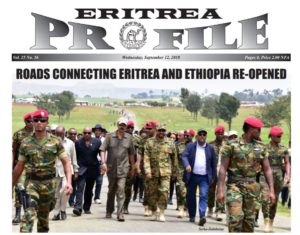
It was a moment of incredible joy and pride for me to see my most intimate wish occurring before my eyes.
I was moved to tears witnessing history in the making.
That march for peace on September 11, 2018, ended the stalemate of no-peace, no-war that existed between the two countries for 20 years.
For his efforts in establishing peace between Ethiopia and Eritrea and peace in his own country, PM Abiy Ahmed was awarded the Nobel Peace prize in 2020.
In his Nobel Lecture, “Forging a Durable Peace in the Horn of Africa”, PM Abiy said:
I accept this award on behalf of Ethiopians and Eritreans, especially those who made the ultimate sacrifice in the cause of peace.
Likewise, I accept this award on behalf of my partner, and comrade-in-peace, President Isaias Afeworki, whose goodwill, trust, and commitment were vital in ending the two-decade deadlock between our countries.
I later reflected on peace between Ethiopia and Eritrea my commentary, “Blessed are the Peacemakers:
The guns silenced, the suffering the people of Ethiopia and Eritrea may now speak, shout out, that the two countries hereafter ‘shall beat their swords into plowshares, and their spears into pruning hooks: nation shall not lift up sword against nation, neither shall they learn war anymore.’ Witnessing swords beaten into plowshares is a source of great joy for me.
Ethiopia and Eritrea are at peace now.
Today, the struggle is between those who want to see Ethiopia at peace and Ethiopia in pieces.
My proposals for peace and reconciliation over the years…
I have been writing, talking and lecturing on peace, national dialogue and reconciliation in Ethiopia for years.
In my August 20, 2012 commentary, “Cheetahs, Hippos and Saving Ethiopia”, I argued, “Now is the Time for Ethiopia’s Cheetah Generation to Lead the Way to National Reconciliation”. I now call upon and appeal to all of Ethiopia’s youth to lead the transitional national dialogue because I believe Ethiopia’s salvation and destiny rests not in the hardened jaws of the hippos but in the soft paws of the cheetahs.”
In my April 12, 2012 commentary, “Identity Politics and Ethiopia’s Transition to Democracy”, I argued that we need to “transform the politics of identity and ethnicity into a dialogue over strengthening national unity and furthering the common cause of our humanity through cooperation, accommodation and reconciliation (while avoiding the path to conflict and violence).”
In my April 16, 2012 commentary, “The Bridge on the Road(map) to Democracy”, I argued in prophetic voice that inclusive national dialogue is necessary in the transition from dictatorship to democracy.
Conventional wisdom says the important task of managing the transition from dictatorship to democracy should be left to the elites… But for there to be a truly a successful transition followed by a durable democracy, the dialogue base must be expanded to broadly include civil society organizations, human rights advocacy groups, women and the youth. In fact, the likelihood of a successful transition is increased manifold if civil society organization, advocacy groups, women and youth take a leading role. The reasons are self-evident. Civil society organizations are critical to civil engagement and citizen action for participatory democracy. They are important in facilitating broad-based mobilization in a transitional period and in ensuring responsive governance in the post-transition period. They are also most effective in giving voice to the poor, the minorities and the vulnerable. The youth are important because the future belongs to them.
Women need to be given a prominent role in the transitional dialogue because they have been historically ignored, discounted, overlooked and forgotten though they represent one-half of the population. There could be no true democracy where there is no gender equality, and that is one of the glaring inequalities in Ethiopia today.
But women’s involvement in the transitional dialogue is vital because they bring their own unique insights and perspectives to the problems. I believe women have special leadership qualities which are vital to democratic transition and governance. On balance, they tend to be more honest, intelligent, understanding and trusting than men. They are more compassionate than men and more likely to negotiate and compromise. But we will never know the leadership potential of Ethiopian women because few have been given a chance to prove themselves. They must have a major role in the dialogue on Ethiopia’s transition from dictatorship to democracy.
Beginning in January 2018, I wrote a series of commentaries exploring the necessity and possibility of national dialogue, reconciliation and truth finding in Ethiopia.
The general aim of the series was to raise fundamental questions about “reconciliation” within the framework of a TPLF-centered political dialogue and to urge caution and help inform those who, in good faith, seek to promote a “reconciliation process” as a way out of dire situation in Ethiopia at the time.
In Part I of the series, I explored the feasibility of a dialogue and reconciliation process with the TPLF bosses.
I argued the TPLF bosses were at the end of their ropes, on their last legs. They do not know what to do to continue to cling to power and maintain the ethnic apartheid system they have enjoyed over the past 27 years.
But I kept the door to reconciliation open:
Forgiveness and dispensation to wrong doers who are willing to tell the truth, the whole truth and nothing but the truth about their crimes on a case-by-case basis is appropriate to temper justice with mercy. But there can be no blanket amnesty for pretended avoidance of imagined harms.
Truth and reconciliation are the only way we can realize the dream of a beautiful Ethiopia.
In Part II of the series, I examined the extreme difficulty in engaging in “mediation”, “reconciliation” and “negotiation” with the TPLF. I doubted whether the TPLF could make the moral and ethical commitment to engage in honest dialogue and reconciliation process.
I argued, “Reconciliation requires a fundamental commitment to working together and sharing power to serve the greater good. The T-TPLF public position has always been, “We will not give up power we have won with the bullet to those who have won elections at the ballot.”
In Part III, I argued that the TPLF was in no condition to dialogue or reconcile. The TPLF is a wounded beast in its death throes.
The TPLFers feel trapped like a rat on sinking ship unable to jump. They feel they are between a rock and the deep blue sea. They feel the walls are closing in on them. They believe the other ethnic groups are ganging together for their eventual destruction. They can plainly see the people are not afraid of them or their guns and helicopter gunships. As the old saying goes, “A dead donkey fears no hyenas.”
In Part IV, I proposed an Ethiopiawinet-centered grassroots reconciliation process that is likely to heal the wounds that have been inflicted on Ethiopians by the TPLF for decades, promote long-term national harmony and avert civil war.
Today, Ethiopia stands at the crossroad of peace and prosperity and war and endless strife.
Each one of us must choose which way to turn.
As I see it, the struggle in Ethiopia today is between those who want to see Ethiopia at peace and Ethiopia in pieces.
I choose to take the road less travelled because I want to see Ethiopia at peace and in prosperity.
In the verse of Robert Frost:
… I shall be telling this with a sigh
Somewhere ages and ages hence:
Two roads diverged in a wood,
and I — I took the one less traveled by,
And that has made all the difference.
For me and for Ethiopia!
Part II… to be continued.

